Grow Kohlrabi at Home? Absolutely! You might be thinking, “Kohlrabi? What is that, and why would I want to grow it?” Well, let me tell you, this quirky-looking vegetable, often called a “German turnip” (though it’s not a turnip at all!), is a culinary delight and surprisingly easy to cultivate in your own backyard. For centuries, kohlrabi has been a staple in European and Asian cuisines, prized for its crisp, slightly sweet flavor and versatility in the kitchen. Think of it as a cross between a cabbage and a radish, but milder and more approachable.
But here’s the real hook: imagine stepping outside your door and harvesting fresh, organic kohlrabi for a vibrant salad, a crunchy slaw, or even a delicious roasted side dish. No more relying on questionable supermarket produce! In this DIY guide, I’m going to share my favorite tricks and hacks to help you grow kohlrabi at home, even if you’re a complete beginner. We’ll cover everything from seed starting to harvesting, ensuring you have a bountiful crop of this unique and nutritious vegetable. So, ditch the grocery store and let’s get our hands dirty!
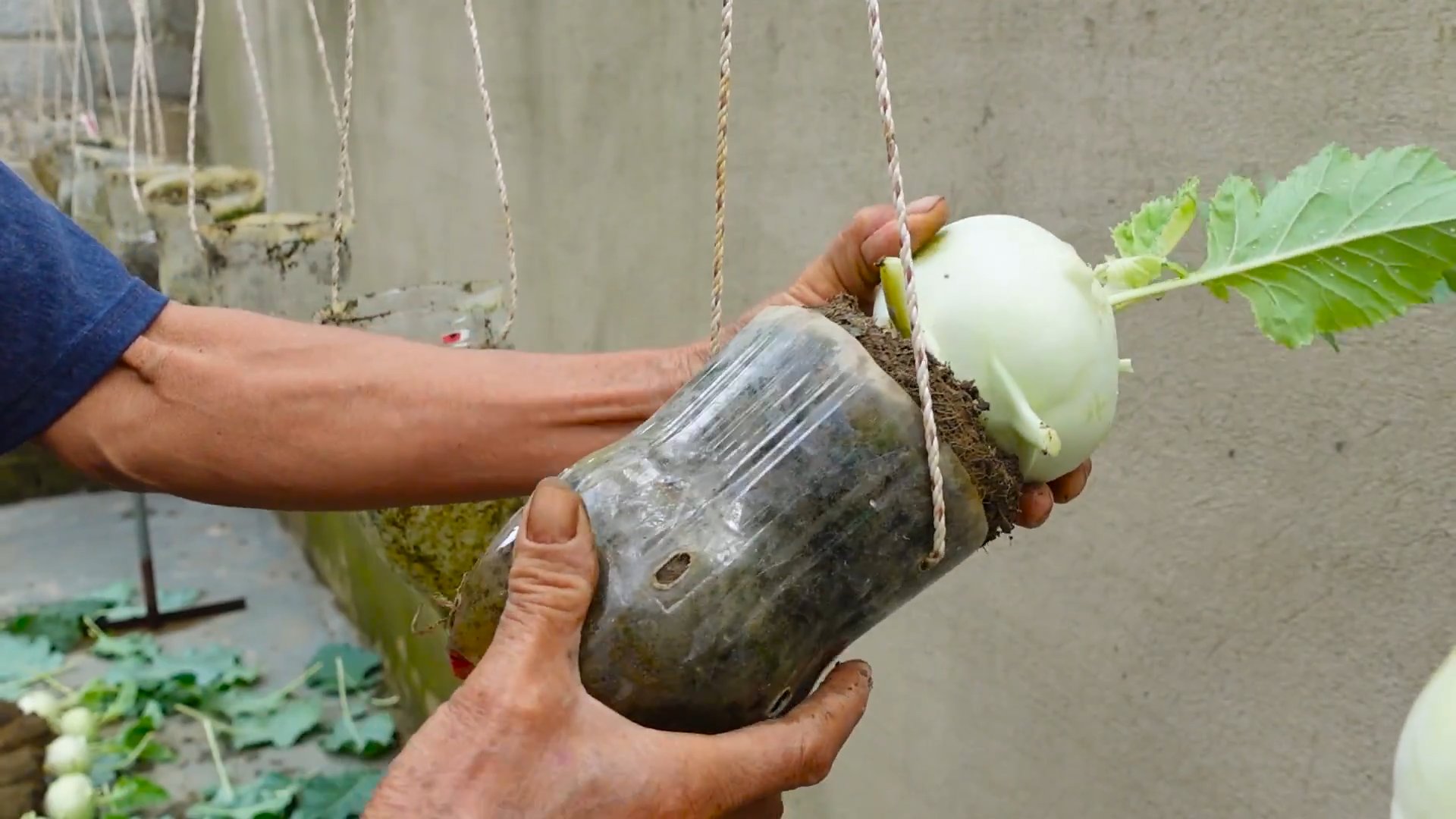
Grow Your Own Delicious Kohlrabi: A Beginner’s Guide
Hey there, fellow gardening enthusiasts! I’m so excited to share my experience with growing kohlrabi. It’s a fantastic vegetable that’s often overlooked, but trust me, it’s incredibly rewarding to grow at home. It’s got a unique, slightly sweet, and subtly peppery flavor that’s delicious raw or cooked. Plus, it’s packed with nutrients! This guide will walk you through everything you need to know to successfully cultivate kohlrabi in your own backyard (or even in containers!).
What is Kohlrabi Anyway?
Before we dive in, let’s clarify what kohlrabi actually is. It’s a member of the cabbage family, but instead of forming a head like cabbage, it develops a swollen, bulb-like stem above ground. This “bulb” is the part we eat. The leaves are also edible, similar to collard greens or kale.
Choosing the Right Variety
There are several kohlrabi varieties to choose from, each with slightly different characteristics. Here are a few popular options:
- Early White Vienna: A classic, early-maturing variety with pale green bulbs. It’s known for its mild flavor and good storage potential.
- Early Purple Vienna: Similar to the white variety, but with beautiful purple skin. The flesh is still white and the flavor is comparable.
- Grand Duke: A hybrid variety that’s known for its disease resistance and large, uniform bulbs. It’s a great choice for beginners.
- Superschmelz: This variety can grow to be absolutely enormous (think softball-sized!), but it still retains a good flavor if harvested at a reasonable size.
I personally love growing both the Early White and Early Purple Vienna varieties for their reliable performance and delicious flavor.
Getting Started: Planting Kohlrabi
Kohlrabi is a cool-season crop, which means it thrives in cooler temperatures. This makes it perfect for spring and fall planting.
When to Plant
* Spring Planting: Start seeds indoors 4-6 weeks before the last expected frost. You can also direct sow seeds outdoors 2-4 weeks before the last frost, but starting indoors gives you a head start.
* Fall Planting: Direct sow seeds outdoors 6-8 weeks before the first expected frost.
I usually start my spring kohlrabi indoors to get a jump on the season. For fall crops, I prefer direct sowing.
Where to Plant
Kohlrabi needs at least 6 hours of sunlight per day. Choose a location that receives plenty of sun. The soil should be well-draining and rich in organic matter.
Preparing the Soil
Before planting, amend the soil with compost or well-rotted manure. This will improve drainage, fertility, and water retention. Kohlrabi prefers a soil pH between 6.0 and 7.5. You can test your soil pH with a simple soil testing kit.
Step-by-Step Planting Guide
Here’s a detailed guide to planting kohlrabi, whether you’re starting from seeds indoors or direct sowing:
Starting Seeds Indoors
1. Gather Your Supplies: You’ll need seed starting trays or pots, seed starting mix, kohlrabi seeds, a spray bottle, and a grow light (optional).
2. Fill the Trays: Fill the seed starting trays or pots with seed starting mix. Gently firm the soil.
3. Sow the Seeds: Sow 2-3 kohlrabi seeds per cell or pot, about ¼ inch deep.
4. Water Gently: Water the soil gently with a spray bottle to avoid disturbing the seeds.
5. Provide Light: Place the trays under a grow light or in a sunny window. If using a window, rotate the trays regularly to ensure even growth.
6. Keep the Soil Moist: Keep the soil consistently moist, but not soggy.
7. Thin Seedlings: Once the seedlings have emerged and have a couple of true leaves, thin them to one seedling per cell or pot. Choose the strongest seedling and snip off the others at the soil line.
8. Harden Off Seedlings: About a week before transplanting, harden off the seedlings by gradually exposing them to outdoor conditions. Start by placing them outside for an hour or two each day, gradually increasing the time over the course of a week.
Direct Sowing
1. Prepare the Soil: Rake the soil smooth and remove any rocks or debris.
2. Sow the Seeds: Sow kohlrabi seeds about ½ inch deep and 1-2 inches apart in rows.
3. Water Gently: Water the soil gently to moisten it.
4. Thin Seedlings: Once the seedlings have emerged and have a couple of true leaves, thin them to 4-6 inches apart.
Caring for Your Kohlrabi Plants
Once your kohlrabi plants are in the ground, it’s important to provide them with proper care to ensure a healthy and productive harvest.
Watering
Kohlrabi needs consistent moisture to thrive. Water deeply and regularly, especially during dry periods. Aim for about 1 inch of water per week. I like to use a soaker hose to deliver water directly to the roots.
Fertilizing
Kohlrabi is a heavy feeder, so it benefits from regular fertilization. Apply a balanced fertilizer (such as 10-10-10) according to the package directions. You can also side-dress with compost or well-rotted manure every few weeks.
Weeding
Keep the area around your kohlrabi plants free of weeds. Weeds compete with kohlrabi for water and nutrients. Hand-pull weeds regularly or use a hoe to cultivate the soil. Mulching can also help suppress weeds.
Pest and Disease Control
Kohlrabi is generally a relatively pest-free crop, but it can be susceptible to a few common garden pests, such as cabbage worms, aphids, and flea beetles.
* Cabbage Worms: These green caterpillars can devour kohlrabi leaves. Handpick them off the plants or use a biological insecticide like Bacillus thuringiensis (Bt).
* Aphids: These tiny insects suck sap from the plants, causing them to weaken. Spray aphids with a strong stream of water or use insecticidal soap.
* Flea Beetles: These small, jumping beetles can create small holes in the leaves. Cover the plants with row covers to prevent flea beetles from reaching them.
Kohlrabi can also be susceptible to a few fungal diseases, such as clubroot and downy mildew.
* Clubroot: This disease causes the roots to swell and become distorted. Prevent clubroot by ensuring good soil drainage and avoiding planting kohlrabi in the same location year after year.
* Downy Mildew: This disease causes yellow spots on the leaves. Improve air circulation around the plants and avoid overhead watering to prevent downy mildew.
I always try to use organic pest and disease control methods whenever possible.
Harvesting Your Kohlrabi
The key to delicious kohlrabi is harvesting it at the right time. You want to harvest the bulbs when they are about 2-3 inches in diameter. If you let them grow too large, they can become tough and woody.
When to Harvest
Kohlrabi typically matures in 50-60 days from planting. Check the size of the bulbs regularly and harvest them when they reach the desired size.
How to Harvest
To harvest kohlrabi, simply cut the bulb from the stem with a sharp knife. You can also harvest the leaves, which can be cooked like collard greens or kale.
Storing Kohlrabi
Kohlrabi can be stored in the refrigerator for several weeks. Remove the leaves before storing, as they can draw moisture from the bulb. Store the bulbs in a plastic bag in the crisper drawer.
Enjoying Your Harvest
Now for the best part: enjoying the fruits (or rather, bulbs!) of your labor. Kohlrabi is incredibly versatile and can be used in a variety of dishes.
Raw
Kohlrabi is delicious raw. Peel the bulb and slice it into thin strips or cubes. Add it to salads, slaws, or vegetable platters. It has a crisp, refreshing flavor that’s perfect for summer.
Cooked
Kohlrabi can also be cooked in a variety of ways. It can be steamed, boiled, roasted, or stir-fried. It’s a great addition to soups, stews, and casseroles.
My Favorite Kohlrabi Recipes
* Kohlrabi Slaw: Combine shredded kohlrabi with shredded carrots, mayonnaise, vinegar, and a touch of sugar.
* Roasted Kohlrabi: Toss kohlrabi cubes with olive oil, salt, and pepper, and roast in the oven until tender.
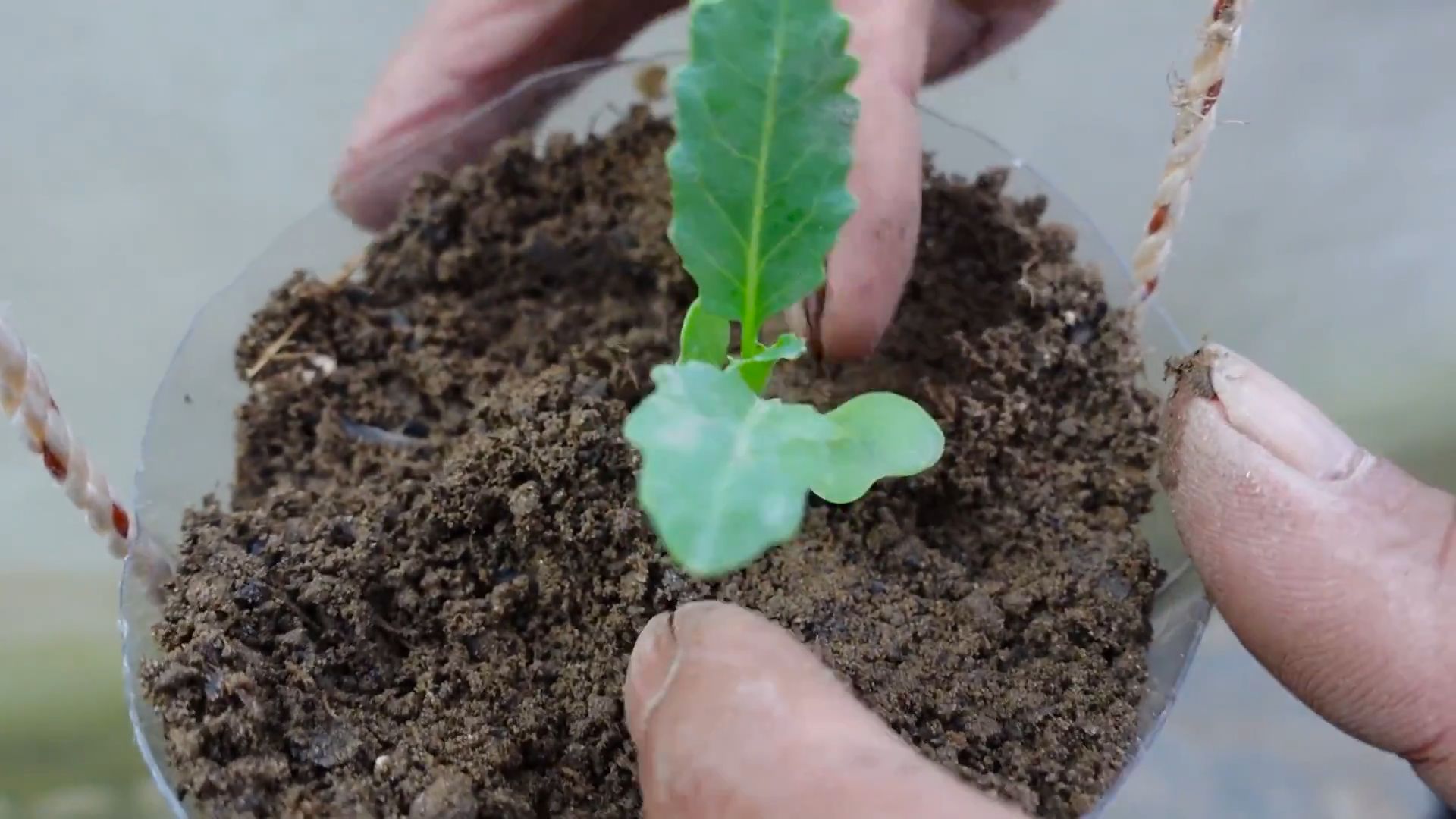
Conclusion
So, there you have it! Growing kohlrabi at home is not only achievable, but it’s also a deeply rewarding experience that connects you directly to your food source. Forget those bland, store-bought kohlrabies – imagine biting into a crisp, juicy bulb that you nurtured from seed to harvest. The difference in flavor and texture is truly remarkable. This DIY trick isn’t just about saving money; it’s about enhancing your culinary adventures and enjoying the freshest possible produce.
Why is this a must-try? Because you’re gaining control over the entire process. You choose the variety, you control the growing conditions, and you harvest at the peak of ripeness. This translates to a superior product that’s bursting with flavor and nutrients. Plus, there’s an undeniable satisfaction that comes from nurturing something from seed to table.
But the fun doesn’t stop there! Feel free to experiment with different kohlrabi varieties. ‘Early White Vienna’ is a classic choice, known for its mild flavor and early maturity. ‘Purple Vienna’ adds a beautiful splash of color to your garden and your plate. For something a little different, try ‘Gigante,’ which can grow to an impressive size without sacrificing flavor.
Consider companion planting to further enhance your kohlrabi growing experience. Planting kohlrabi alongside herbs like dill or chamomile can help deter pests and attract beneficial insects. Marigolds are also excellent companions, known for their pest-repelling properties. You can also interplant with lettuce or spinach, which mature quickly and can be harvested before the kohlrabi needs the space.
And don’t forget about the leaves! Kohlrabi leaves are entirely edible and can be used in salads, stir-fries, or even cooked like spinach. They have a slightly peppery flavor that adds a unique dimension to your dishes.
We strongly encourage you to give this DIY trick a try. It’s easier than you might think, and the rewards are well worth the effort. Whether you have a sprawling garden or just a few containers on your balcony, you can successfully grow kohlrabi at home.
Once you’ve harvested your first crop, we’d love to hear about your experience! Share your photos, tips, and recipes in the comments below. Let’s build a community of kohlrabi enthusiasts and inspire others to embrace the joy of growing their own food. Happy gardening!
Now, let’s address some frequently asked questions to ensure your kohlrabi growing journey is a resounding success.
Frequently Asked Questions (FAQ)
What is the best time to plant kohlrabi?
The timing for planting kohlrabi depends on your climate. Kohlrabi is a cool-season crop, meaning it thrives in temperatures between 60°F and 75°F (15°C and 24°C). For a spring crop, start seeds indoors 4-6 weeks before the last expected frost. You can transplant them outdoors once the soil has warmed up and the risk of frost has passed. For a fall crop, sow seeds directly into the garden in late summer, about 6-8 weeks before the first expected frost. In warmer climates, you can grow kohlrabi throughout the winter.
How much sunlight does kohlrabi need?
Kohlrabi needs at least 6 hours of direct sunlight per day to thrive. Choose a sunny location in your garden or on your balcony. If you’re growing kohlrabi indoors, use grow lights to supplement natural sunlight. Insufficient sunlight can result in leggy plants and small bulbs.
What kind of soil is best for growing kohlrabi?
Kohlrabi prefers well-drained, fertile soil with a pH between 6.0 and 7.5. Amend your soil with compost or other organic matter to improve drainage and fertility. Avoid heavy clay soils, as they can become waterlogged and inhibit bulb development. A slightly sandy loam is ideal.
How often should I water kohlrabi?
Kohlrabi needs consistent moisture to produce plump, juicy bulbs. Water deeply and regularly, especially during dry periods. Aim to keep the soil consistently moist but not waterlogged. Mulching around the plants can help retain moisture and suppress weeds.
How do I fertilize kohlrabi?
Kohlrabi is a heavy feeder, so it benefits from regular fertilization. Before planting, incorporate compost or well-rotted manure into the soil. During the growing season, fertilize every 2-3 weeks with a balanced fertilizer, such as 10-10-10. Avoid over-fertilizing with nitrogen, as this can promote leafy growth at the expense of bulb development.
When is kohlrabi ready to harvest?
Kohlrabi is typically ready to harvest 6-8 weeks after planting. The ideal size for harvesting is when the bulb is about 2-3 inches in diameter. Larger bulbs can become tough and woody. To harvest, simply cut the bulb from the stem just above the soil line.
What are some common pests and diseases that affect kohlrabi?
Common pests that affect kohlrabi include cabbage worms, aphids, and flea beetles. You can control these pests with insecticidal soap, neem oil, or by handpicking them off the plants. Common diseases include clubroot and downy mildew. To prevent these diseases, practice crop rotation, ensure good drainage, and avoid overhead watering.
Can I grow kohlrabi in containers?
Yes, kohlrabi can be successfully grown in containers. Choose a container that is at least 12 inches deep and wide. Use a well-draining potting mix and provide regular watering and fertilization. Container-grown kohlrabi may need more frequent watering than those grown in the ground.
What can I do if my kohlrabi bulbs are cracking?
Cracking in kohlrabi bulbs is usually caused by inconsistent watering. To prevent cracking, ensure that your plants receive consistent moisture, especially during dry periods. Mulching around the plants can also help retain moisture.
How do I store kohlrabi after harvesting?
After harvesting, remove the leaves and store the bulbs in the refrigerator. Kohlrabi can be stored for several weeks in the refrigerator. You can also freeze kohlrabi, but it’s best to blanch it first to preserve its flavor and texture.
Can I eat the kohlrabi leaves?
Yes, kohlrabi leaves are edible and nutritious. They can be used in salads, stir-fries, or cooked like spinach. The leaves have a slightly peppery flavor. Choose young, tender leaves for the best flavor and texture.
What are some ways to use kohlrabi in cooking?
Kohlrabi can be eaten raw or cooked. Raw kohlrabi has a crisp, slightly sweet flavor and can be used in salads, slaws, or as a crudité. Cooked kohlrabi can be steamed, roasted, sautéed, or added to soups and stews. It has a mild, slightly cabbage-like flavor.
Is growing kohlrabi at home organic?
Growing kohlrabi at home allows you to control the inputs and ensure an organic growing process. By using organic fertilizers, pest control methods, and soil amendments, you can grow kohlrabi without the use of synthetic chemicals. This results in a healthier and more flavorful product.

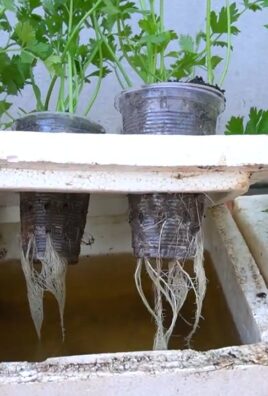
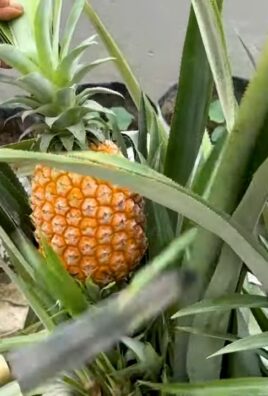
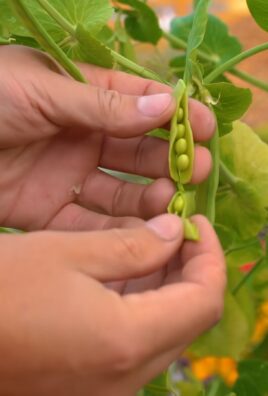
Leave a Comment